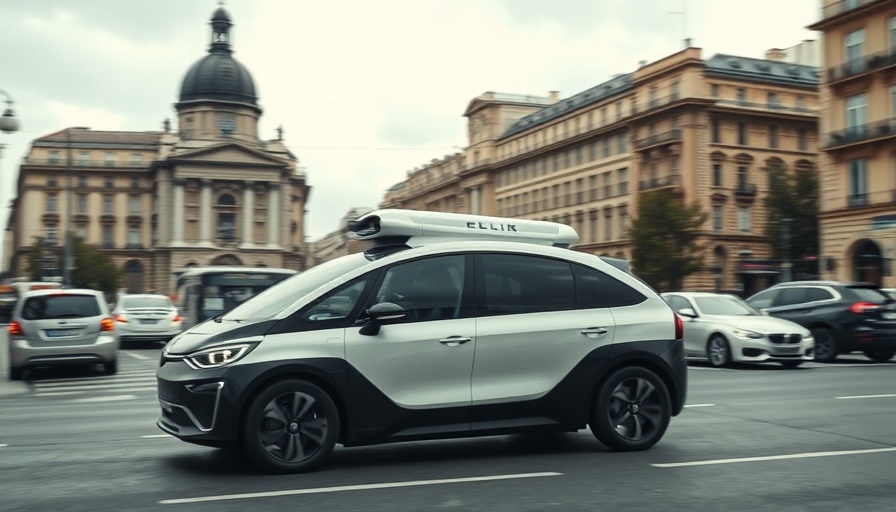
Baidu's Ambitious Move into Europe: Driverless Taxis in the Spotlight
Baidu, a giant in the tech industry, is eyeballing a major step by expanding its driverless taxi service into European markets. The company, known for its robust artificial intelligence capabilities, underscores this expansion as a significant milestone that could disrupt traditional transportation models across the continent.
Understanding the Drivers of This Move
As cities in Europe grapple with traffic congestion and environmental issues, the introduction of Baidu's self-driving vehicles offers potential solutions. These driverless taxis could alleviate urban transportation challenges, prompting discussions around the future of technology in metropolitan life.
What This Means for the European Tech Market
Europe’s embrace of Baidu's technology highlights a shift in the tech industry landscape. As discussions about emerging technologies gain momentum, the presence of a player like Baidu positions Europe to lead in adopting disruptive innovations. This could also spur local companies to enhance their technological capabilities, experiencing a ripple effect within the EU’s tech ecosystem.
Real-World Implications of Driverless Technology
This transition isn't merely about integrating technology; it poses profound questions about the implications of automation on employment, regulatory frameworks, and urban planning. With Baidu tapping into digital insurance solutions for its fleet, the convergence of tech and insurance comes into sharp focus. Insurers may need to reevaluate risk models in this new landscape of autonomous vehicles.
Challenges Facing Baidu's European Endeavor
Despite its ambitious plans, Baidu will face significant hurdles, from ensuring compliance with EU regulations to overcoming the skepticism of European consumers about autonomous technology. Moreover, navigating the competitive landscape, where traditional operators are still entrenched, presents a formidable challenge. Thus, observing which strategies Baidu deploys will be essential in gauging its potential success.
A Glimpse into Tech Trends 2025
As we look ahead to 2025, trends suggest that innovations in tech will continue to disrupt transport. The advent of driverless technology at the helm illustrates broader tech trends, presenting a case study for future transport solutions where efficiency and sustainability are paramount.
In conclusion, Baidu's move is not just about launching a service in Europe; it's about pushing the envelope and prompting all stakeholders in the tech industry to rethink their approaches. With every push toward autonomous solutions, the conversation on technology's role in society will become even more relevant.
 Add Row
Add Row  Add
Add 




Write A Comment